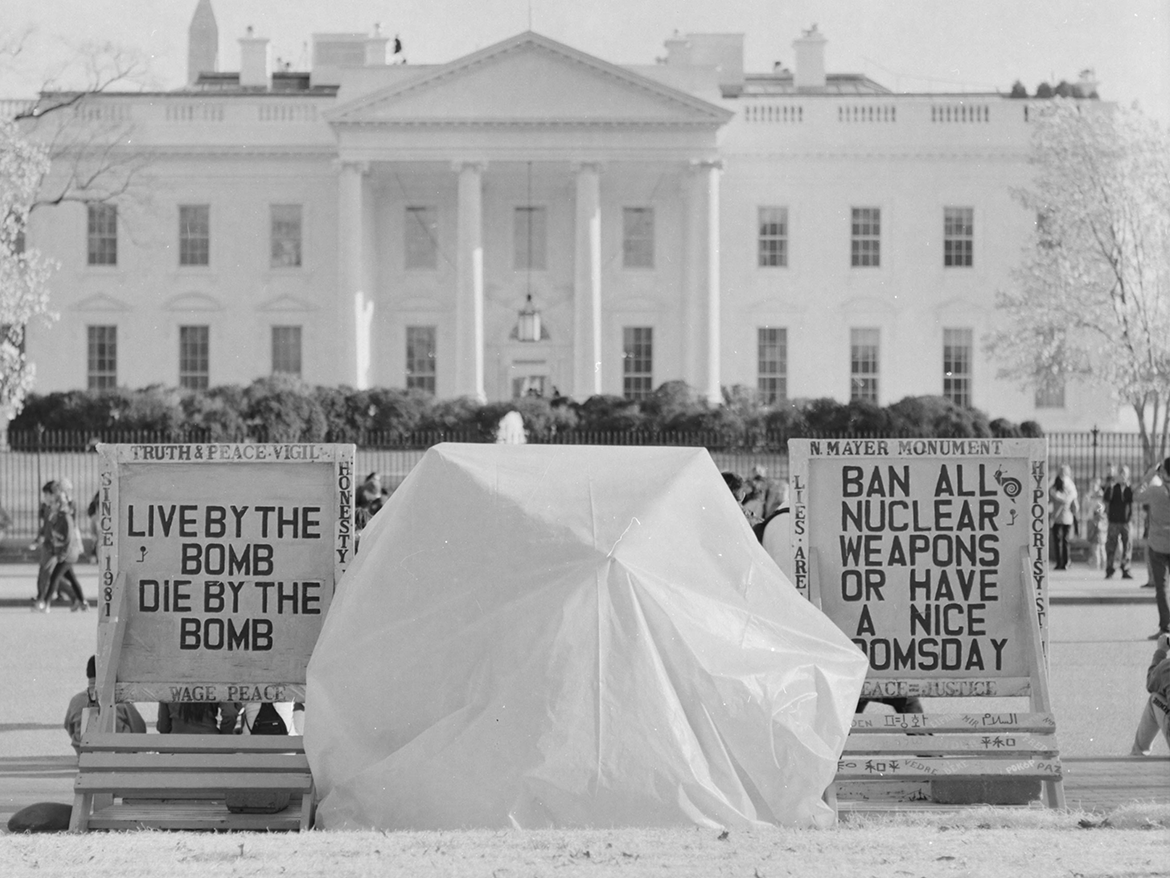With a flash of light in 1945, American scientists brought nuclear weapons into the world. Ever since that moment, FCNL has been working to eliminate these terrible weapons. This work has gained grave new urgency.
Nuclear Weapons: A Call to Responsibility
The world faces renewed threats from increased global tensions. World leaders have been increasingly threatening the use of nuclear weapons. FCNL advocates for policies that prevent escalation, prohibit nuclear testing, and address past harm caused by nuclear weapons testing and deployment. Our vision is a world free of nuclear weapons. While working toward that goal, we aim to reduce the risks of nuclear conflict and ensure justice for those harmed by past policies.
By raising public awareness of the devastating impacts of past tests, we amplify the voices of affected communities and honor the victims of harmful nuclear policies.
Proposed plans to resume nuclear testing would harm communities, escalate tensions, and undermine decades of nonproliferation progress. The Comprehensive Nuclear Test Ban Treaty (CTBT) remains a cornerstone of global efforts to prevent testing. 187 countries have signed the CTBT, but multiple countries — including the United States – have not ratified it. FCNL supports legislative measures to block funding for nuclear testing. By raising public awareness of the devastating impacts of past tests, we amplify the voices of affected communities and honor the victims of harmful nuclear policies.
The growing risks of a renewed nuclear arms race demand immediate attention. Bipartisan support for arms control agreements has historically ensured global stability yet growing tensions between nuclear armed nations threaten to undermine these efforts. FCNL has historically resisted efforts to return to U.S nuclear testing, and we reaffirm U.S. leadership in arms control and reduce the role of nuclear weapons in national security policy. Preventing a nuclear arms race protects global security and affirms moral leadership.
Communities harmed by past nuclear tests, including Native American tribes, miners, and those who lived near or downwind from nuclear test sites (“downwinders”) deserve justice. FCNL supports expanding the Radiation Exposure Compensation Act (RECA) to ensure all impacted communities receive recognition and compensation. This includes extending eligibility, increasing compensation, and securing long-term program funding. Justice for these communities is a moral imperative.
What Can We Do?
The only real answer is to eliminate nuclear weapons. As we work toward that goal, Congress should take immediate steps to:
-
Prevent a Return to Nuclear Testing: Prohibit funding for nuclear testing and uphold the principles of the Comprehensive Nuclear Test Ban Treaty, namely maintaining prohibition on nuclear explosions and a commitment to international cooperation and verification.
-
Avert a Nuclear Arms Race: Support arms control agreements, such as the New START Treaty, and advocate for reducing reliance on nuclear weapons in U.S. policy and supporting arms control dialogue with other nuclear arms nations.
-
Expand the Radiation Exposure Compensation Act: Provide justice and compensation for communities harmed by past nuclear testing and ensure long-term program sustainability.
FCNL has worked for decades to reduce and eliminate the dangers posed by nuclear weapons. Your voice matters. Together, we can create a safer, more just world free from nuclear dangers.
Join our email list!
Stay informed and stay active
